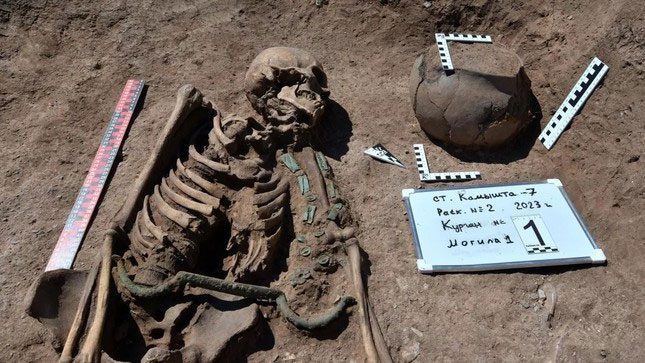Archaeologists in Siberia have discovered a well-preserved 3,000-year-old tomb. The burial artifacts indicate that horse-drawn chariots were used in this region over 3,000 years ago.

The burial items include a piece of bronze with a special hook, likely used to secure the reins around the waist of the charioteer. (Photo: IAET SB RAS)
Aleksey Timoshchenko, an archaeologist at the Institute of Archaeology and Ethnography of the Russian Academy of Sciences, led the expedition to the Askizsky region of Khakassia in Siberia, where Russian archaeologists have spent several years excavating tombs.
The tomb of the “charioteer” was found among those dating back approximately 3,000 years to the time of the Lugav culture. The burial took place on a mound built over a square stone tomb. A bronze dagger, bronze jewelry, and a distinctive belt piece were among the buried artifacts.
“For a long time, within Russian archaeology, this item was referred to as PNN – an object of unclear purpose. However, recent discoveries of charioteer tombs from the Bronze Age in China, along with the remains of chariots, indicate that this is an accessory for chariots,” he stated.
The skeletons were buried alongside a metal accessory with a special hook that allows the charioteer to secure the reins at their waist. This type of artifact has also been found in tombs in China and Mongolia.
Timoshchenko noted that the Bronze Age people of the Lugav culture primarily engaged in cattle herding and were eventually replaced by the Scythians of the Tagar culture in this area around the eighth century BC, during the early Iron Age.


















































